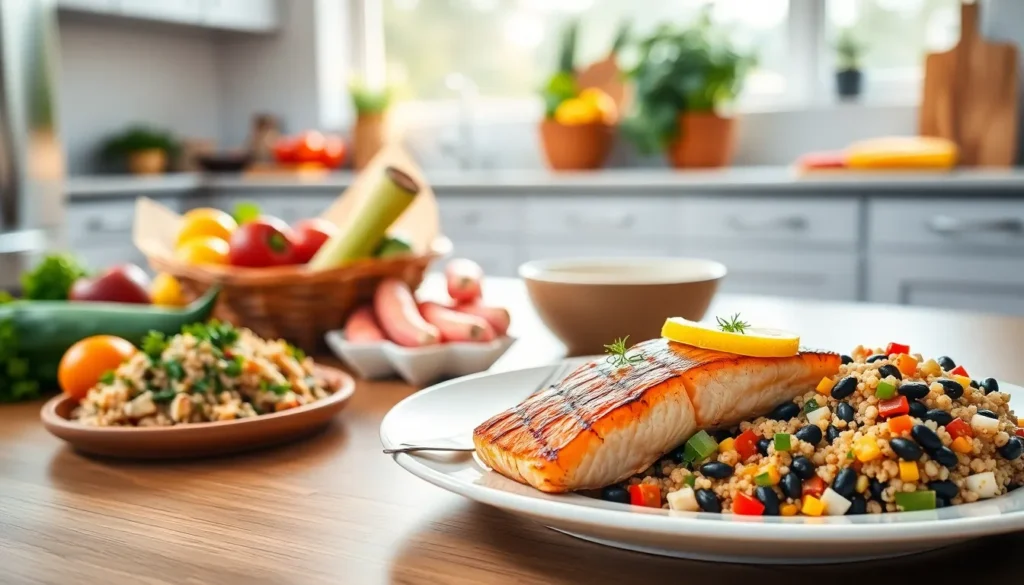Have you ever tried to order a meal and felt like a deer in headlights because you weren’t sure what to pick? Enter the peskatrian, a delightful blend of pescatarian and vegetarian diets. These folks have perfected the art of enjoying seafood and plant-based meals without the meat-induced stress. If you’re curious about this lifestyle that allows you to savor the ocean’s offerings while embracing veggies, stick around. You might just find a new way to spice up your plate.
peskatrian

Peskatrianism is an intriguing lifestyle choice that marries the principles of vegetarianism with a fondness for seafood. While some may consider it a niche dietary practice, peskatrians have found a balance that emphasizes health, sustainability, and culinary delight. This lifestyle emerged from a growing awareness of the environmental impact of meat consumption, coupled with a love for the ocean’s bounty. What sets peskatrians apart is their commitment to nourishing themselves without the ethical concerns or health risks that can accompany a full meat-based diet.
In essence, peskatrians prioritize fish and other seafood while enjoying a variety of vegetarian foods such as fruits, vegetables, grains, legumes, nuts, and seeds. Adopting this lifestyle can provide diverse culinary experiences that often lead to the discovery of new dishes and flavors.
The Principles of Peskatrian Diet
At the heart of peskatrianism lies a few guiding principles. First, the diet focuses heavily on seafood, which is generally recognized for its high protein content and essential omega-3 fatty acids. Fish like salmon, mackerel, and sardines are often staples in peskatrian cuisine. But, variety is essential: peskatrians are encouraged to explore different species to reap the broadest range of nutrients.
Next, peskatrians fork out a hefty portion of their plates for fruits and vegetables. Whole grains and legumes also form a solid foundation, contributing both fiber and protein. The philosophy of balance entails incorporating different food groups while emphasizing fresh, seasonal, and locally sourced ingredients. Notably, peskatrians do not include poultry or red meats but enjoy a variety of vegetarian meals alongside their seafood.
This balance also resonates with sustainability, making peskatrianism appealing for those who are environmentally conscious. Eating primarily plant-based foods reduces carbon footprints, while choosing sustainably sourced seafood minimizes habitat destruction and overfishing.
Health Benefits of a Peskatrian Diet
A peskatrian diet offers a plethora of health benefits that make it an enticing option for many. First and foremost, the inclusion of fish provides a rich source of essential fatty acids, particularly omega-3s. These nutrients are crucial for heart health and brain function, reducing the risk of chronic diseases. Studies have shown that individuals consuming seafood regularly experience a lower incidence of heart diseases compared to those who abstain from it altogether.
Also, the overall reduction in meat consumption naturally leads to lower saturated fat intake, contributing to improved cholesterol levels. The high fiber content found in fruits, vegetables, and whole grains supports digestive health and may reduce the risk of certain cancers.
Also, peskatrianism can enhance one’s energy levels and overall vitality. Many find that the abundance of nutrients found in both seafood and plant-based foods leads to increased stamina. Combining these advantages gives peskatrians an edge when it comes to overall health.
Common Misconceptions About Peskatrianism
Even though the rising popularity of peskatrianism, several misconceptions surround this lifestyle, leading to confusion. One major myth is that peskatrians eat only fish and no vegetables. This assumption couldn’t be further from the truth. While fish is a primary component, peskatrians emphasize a colorful array of fruits and veggies on their plates, showcasing a diverse diet.
Another misunderstanding is the idea that peskatrianism is just a phase. Many peskatrians adopt this lifestyle for ethical reasons, health considerations, or environmental concerns. This commitment often translates into lifelong dietary choices rather than temporary fads.
Finally, some believe peskatrianism is too restrictive. In reality, peskatrians enjoy a wide variety of meals, showcasing creativity in their cooking. From seafood pasta to vibrant salads, the options available are as endless as the ocean’s depth.
Adopting a Peskatrian Lifestyle
Transitioning to a peskatrian lifestyle doesn’t have to be a daunting challenge. A gradual approach works best for many: starting with adding more seafood to weekly meals can be a smooth introduction. Incorporating at least two fish-based dishes per week can help individuals adapt while gradually phasing out red meat and poultry.
Joining a community, whether online or in person, provides support and inspiration. Many resources, including cookbooks and blogs, offer recipes and meal ideas specifically for peskatrians. Exploring local fish markets and farmers’ markets can also foster a closer connection to the ingredients and encourage individuals to choose seasonal and sustainable options.
Eventually, the shift involves redefining tastes and preferences, which can be a fun and delicious journey. Experimenting with flavors, textures, and cuisines can lead to newfound favorite dishes that reflect both personal ethics and health priorities.
Recipes and Meal Ideas for Peskatrians
A peskatrian lifestyle opens the door to a world of enticing recipes that appeal to both seafood lovers and veggie enthusiasts. Here are a couple of meal ideas that folks can try at home:
Grilled Lemon Herb Salmon
- Ingredients: 1 salmon fillet, lemon juice, olive oil, fresh herbs (like dill and parsley), garlic, salt, and pepper.
- Instructions: Marinate the salmon with lemon juice, olive oil, minced garlic, and herbs. Grill until cooked to perfection and serve with a side of roasted vegetables.
Quinoa and Black Bean Salad
- Ingredients: Cooked quinoa, black beans, bell peppers, corn, lime juice, cilantro, salt, and pepper.
- Instructions: Mix all ingredients in a bowl and adjust seasoning to taste. This dish is not only vibrant but also packed with protein.
Diving into such recipes allows for creativity while sticking to the peskatrian principles, satisfying cravings without compromising health.
